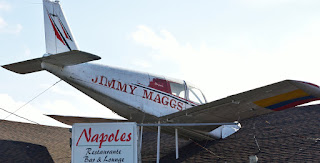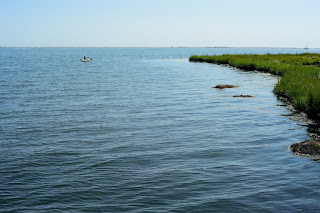Shake it up!
In my windowless office I suddenly felt the pier wiggle. The signs posted for inspectors showing the deterioration of 70 year old columns raced through my mind, as did a recent collision with one of the buoy tenders. I was joined by coworkers as we rushed outside to see which boat bumped into us this time. Some west coast transplants seemed a bit homesick, and no boats were in mooring.
Soon the news reports of earthquakes started. Most of us were surprised to find out that there are several minor fault lines throughout New England. Here's the best map I could find of Connecticut to illustrate.
This UConn map simplifies the lines.
I live quite close to that eastern Lake Char Fault line, and it or the Hope Valley Shear Zone has been rumbling the past week. Earthquakes are rare and slight in New England, but at 3.3 on the Richter Scale it woke a few people up at 6:30 this fine morning. Mind, this is a minor earthquake and nothing to be worried about. Perhaps you had a plate knocked off the wall, but no major structural damage will happen at these levels. But we are not used to such things. Indeed, my house is located such that I thought a train was coming, of the garbage truck was a little louder than usual.
The recent weather changes brought many to believe we were having frost-quakes, otherwise known as cryoseism. Indeed, I was photo-chasing the fog created by our 60+F temps a week ago, followed by Single digit temps 4 days later. Quite the temperature swing!
The geologists at Boston College Weston Observatory are reported to refute this idea, and have stated that these are indeed tectonic plate quakes. Little comfort to those on shaky ground.
I did not feel any of these quakes myself, unless that wasn't the garbage truck that woke me. My California and Alaskan friends didn't even rush to a doorjamb.
But this has led me to do some light research on the area. The Lake Char Fault shaking things up in the Quiet Corner was created 300 million years ago. Parts of Spain and Africa on the continent Avalonia crashed into Thompson. The rest, of course, was prehistory. I find this most interesting as the earliest known explorers, the Norse, and many of the earliest European settlements (or encroachments, if you prefer) were on Avalonian remains. It is literally and figuratively where continents collide.
Disclaimer: Research contained herein has NOT been verified or peer reviewed. I am not a valid source for historical or geologic content, though I have linked to many source that might be verifiable.






Comments
Post a Comment